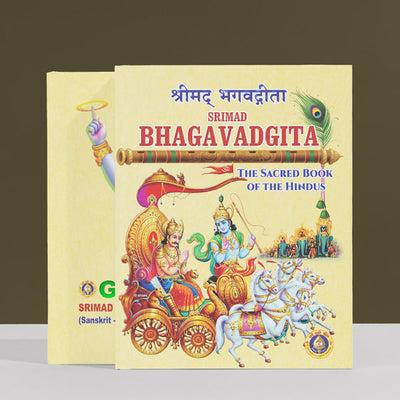Chat With Us
INR
- US Dollar (USD)
- Euro (EUR)
- British Pound (GBP)
- Canadian Dollar (CAD)
- Afghan Afghani (AFN)
- Albanian Lek (ALL)
- Algerian Dinar (DZD)
- Angolan Kwanza (AOA)
- Argentine Peso (ARS)
- Armenian Dram (AMD)
- Aruban Florin (AWG)
- Australian Dollar (AUD)
- Barbadian Dollar (BBD)
- Azerbaijani Manat (AZN)
- Bangladeshi Taka (BDT)
- Bahamian Dollar (BSD)
- Bahraini Dinar (BHD)
- Burundian Franc (BIF)
- Belarusian Ruble (BYN)
- Belarusian Ruble (BYR)
- Belize Dollar (BZD)
- Bermudan Dollar (BMD)
- Bhutanese Ngultrum (BTN)
- Bosnia-Herzegovina Convertible Mark (BAM)
- Brazilian Real (BRL)
- Bolivian Boliviano (BOB)
- Botswanan Pula (BWP)
- Brunei Dollar (BND)
- Bulgarian Lev (BGN)
- Myanmar Kyat (MMK)
- Cambodian Riel (KHR)
- Cape Verdean Escudo (CVE)
- Cayman Islands Dollar (KYD)
- Central African CFA Franc (XAF)
- Chilean Peso (CLP)
- Chinese Yuan (CNY)
- Colombian Peso (COP)
- Comorian Franc (KMF)
- Congolese Franc (CDF)
- Costa Rican Colón (CRC)
- Croatian Kuna (HRK)
- Czech Koruna (CZK)
- Danish Krone (DKK)
- Djiboutian Franc (DJF)
- Dominican Peso (DOP)
- East Caribbean Dollar (XCD)
- Egyptian Pound (EGP)
- Ethiopian Birr (ETB)
- Falkland Islands Pound (FKP)
- CFP Franc (XPF)
- Fijian Dollar (FJD)
- Gibraltar Pound (GIP)
- Gambian Dalasi (GMD)
- Ghanaian Cedi (GHS)
- Guatemalan Quetzal (GTQ)
- Guyanaese Dollar (GYD)
- Georgian Lari (GEL)
- Guinean Franc (GNF)
- Haitian Gourde (HTG)
- Honduran Lempira (HNL)
- Hong Kong Dollar (HKD)
- Hungarian Forint (HUF)
- Icelandic Króna (ISK)
- Indonesian Rupiah (IDR)
- Israeli New Shekel (ILS)
- Iranian Rial (IRR)
- Iraqi Dinar (IQD)
- Jamaican Dollar (JMD)
- Japanese Yen (JPY)
- Jersey Pound (JEP)
- Jordanian Dinar (JOD)
- Kazakhstani Tenge (KZT)
- Kenyan Shilling (KES)
- Kuwaiti Dinar (KWD)
- Kyrgystani Som (KGS)
- Laotian Kip (LAK)
- Latvian Lats (LVL)
- Lebanese Pound (LBP)
- Lesotho Loti (LSL)
- Liberian Dollar (LRD)
- Libyan Dinar (LYD)
- Malagasy Ariary (MGA)
- Macedonian Denar (MKD)
- Macanese Pataca (MOP)
- Malawian Kwacha (MWK)
- Maldivian Rufiyaa (MVR)
- Mexican Peso (MXN)
- Malaysian Ringgit (MYR)
- Mauritian Rupee (MUR)
- Moldovan Leu (MDL)
- Moroccan Dirham (MAD)
- Mongolian Tugrik (MNT)
- Mozambican Metical (MZN)
- Namibian Dollar (NAD)
- Nepalese Rupee (NPR)
- Netherlands Antillean Guilder (ANG)
- New Zealand Dollar (NZD)
- Nicaraguan Córdoba (NIO)
- Nigerian Naira (NGN)
- Norwegian Krone (NOK)
- Omani Rial (OMR)
- Panamanian Balboa (PAB)
- Pakistani Rupee (PKR)
- Papua New Guinean Kina (PGK)
- Paraguayan Guarani (PYG)
- Peruvian Sol (PEN)
- Philippine Piso (PHP)
- Polish Zloty (PLN)
- Qatari Rial (QAR)
- Romanian Leu (RON)
- Russian Ruble (RUB)
- Rwandan Franc (RWF)
- Samoan Tala (WST)
- St. Helena Pound (SHP)
- Saudi Riyal (SAR)
- São Tomé & Príncipe Dobra (STD)
- Serbian Dinar (RSD)
- Seychellois Rupee (SCR)
- Sierra Leonean Leone (SLL)
- Singapore Dollar (SGD)
- Sudanese Pound (SDG)
- Syrian Pound (SYP)
- South African Rand (ZAR)
- South Korean Won (KRW)
- South Sudanese Pound (SSP)
- Solomon Islands Dollar (SBD)
- Sri Lankan Rupee (LKR)
- Surinamese Dollar (SRD)
- Swazi Lilangeni (SZL)
- Swedish Krona (SEK)
- Swiss Franc (CHF)
- New Taiwan Dollar (TWD)
- Thai Baht (THB)
- Tajikistani Somoni (TJS)
- Tanzanian Shilling (TZS)
- Tongan Paʻanga (TOP)
- Trinidad & Tobago Dollar (TTD)
- Tunisian Dinar (TND)
- Turkish Lira (TRY)
- Turkmenistani Manat (TMT)
- Ugandan Shilling (UGX)
- Ukrainian Hryvnia (UAH)
- United Arab Emirates Dirham (AED)
- Uruguayan Peso (UYU)
- Uzbekistani Som (UZS)
- Vanuatu Vatu (VUV)
- Venezuelan Bolívar (VEF)
- Vietnamese Dong (VND)
- West African CFA Franc (XOF)
- Yemeni Rial (YER)
- Zambian Kwacha (ZMW)
- Indian Rupee (INR)



















